One of the scariest shots imaginable to many golfers is the hook. Whether it starts way out right and careens towards those bushes to the left or starts left and shoots low and even further left the hook in all it’s forms can be one of the most destructive shot shapes there is. So, is there an easy fix? What if you just change your equipment?
Well, the causes of a hook are of course, like most bad shots, mainly down to the golfer and dependent on how you deliver it. So, if your club path moves way right of target and you shut your face to compensate, poor timing will almost always create a hook shape. However, if you use clubs that counteract the effects of this delivery it can be effective in making your shots more useable. So how can we help you avoid the left rough? Let’s start with lie angle. Lie angle is always a factor to consider when looking at shot shape, and an overly upright lie angle will often cause the heel to dig through impact with your irons. What this causes is the face then points to the left of target with very little loft, shooting the ball out left. The reverse of this is true for a slicer, which you can read about here in my previous blog about fixing your slice. We can also look at lie angle with your driver to achieve the same thing, however as the driver doesn’t make contact with the ground (or at least it shouldn’t!) it has a different effect. Flattening the lie angle of your woods makes it easier to leave the face open through impact and therefore reduce the effect of a hook. This can be achieved by adjusting the driver using the adjustable sleeve often offered into a flatter setting or by selecting a driver that just naturally sits flat, such as TaylorMade’s Stealth.
So, we’ve addressed where the face is pointing by using lie angle, what about what the shaft is doing? The shaft can be a big part of exacerbating a hook. Shaft with softer tip sections or more torque will want to twist shut quicker than stiffer, more stable shafts, particularly at speed and this is quite often the cause of a hook but what it will also often do is illicit a reaction from the golfer to keep their hands way open avoiding the left side, often creating a block to the right. This two-way miss is the worst-case scenario for most golfers. The way to combat these shaft issues would be often to go into a stiffer shaft flex, particularly looking for something with less torque and a more stable tip section.
The final piece of the puzzle is the dreaded toe strike. Hitting this part of the head causes the ball to “gear” against the club, tilting the axis the ball spins on to the left and causing the movement. With woods we can stabilise against this strike by moving weight into the toe with the adjustable weight tracks. This 1. makes the heel lighter compared to the toe, making the face easier to keep more open, and 2. Causes less “gearing” when the ball makes contact with that part of the face as there is weight right behind the point of contact which keeps the face squarer. Shafts can also be a cause of the toe strike if they are too soft. Shafts will droop down in the downswing, due to the weight to the head, which can also present the toe. Once again this can often be solved by stiffening up the shaft you use.
Now if you’re still finding you have a case of the hooks after taking the steps then obviously, I’ll recommend you sort it out by getting instruction to fix the underlying problems, however using the technology at our disposal in a fitting environment can make golf a much more playable game in the meantime, which I’m all for!
Custom Fitting is available at Peter Field Golf 7 days a week! Get fitted here.



